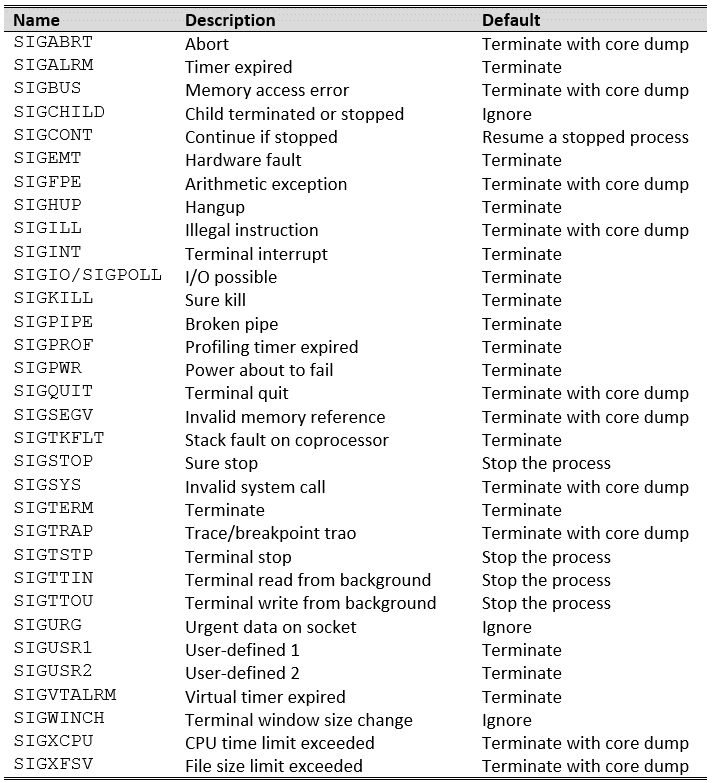


The kernel can generate signals to notify processes of events. The raise(3) library function sends the specified signal to the current process.Įxceptions such as division by zero, segmentation violation ( SIGSEGV), and floating point exception ( SIGFPE) will cause a core dump and terminate the program. Similarly, the kill(1) command allows a user to send signals to processes. The kill(2) system call sends a specified signal to a specified process, if permissions allow. Plan 9 from Bell Labs (mid 80s) replaced signals with notes, which permit sending short, arbitrary strings. In Version 7 (1979) each numbered trap received a symbolic name. Version 5 (1974) could send arbitrary signals. Version 4 (1973) combined all traps into one call, signal.

Version 1 Unix (1971) had separate system calls to catch interrupts, quits, and machine traps. The kernel may pass an interrupt as a signal to the process that caused it (typical examples are SIGSEGV, SIGBUS, SIGILL and SIGFPE).

Signals are similar to interrupts, the difference being that interrupts are mediated by the CPU and handled by the kernel while signals are mediated by the kernel (possibly via system calls) and handled by individual processes. Otherwise, the default signal handler is executed.Įmbedded programs may find signals useful for inter-process communications, as signals are notable for their Algorithmic efficiency. If the process has previously registered a signal handler, that routine is executed. Execution can be interrupted during any non-atomic instruction. When a signal is sent, the operating system interrupts the target process' normal flow of execution to deliver the signal. Signals originated in 1970s Bell Labs Unix and were later specified in the POSIX standard. Common uses of signals are to interrupt, suspend, terminate or kill a process. They are a limited form of inter-process communication (IPC), typically used in Unix, Unix-like, and other POSIX-compliant operating systems.Ī signal is an asynchronous notification sent to a process or to a specific thread within the same process to notify it of an event. Signals are standardized messages sent to a running program to trigger specific behavior, such as quitting or error handling. JSTOR ( August 2012) ( Learn how and when to remove this template message).Unsourced material may be challenged and removed. Please help improve this article by adding citations to reliable sources. This article needs additional citations for verification.


 0 kommentar(er)
0 kommentar(er)
